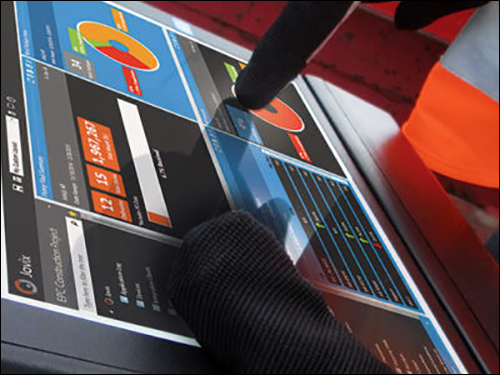Engineering, procurement and construction firm Bechtel and Birmingham, Ala., technology company Atlas RFID Solutions have piloted a new drone-mounted active RFID reader aimed at enabling inventory reads in a laydown yard and construction area automatically, from overhead. The system consists of a 433 MHz RFID reader attached to the under-carriage of an industrial drone, with active RFID tags affixed to goods, such as pipes that are stored in outdoor yards or are part of a new construction.
Atlas RFID’s Jovix Material Readiness software application captures and manages data, including not only the unique ID number of each tag, but also the tag’s GPS-based location within approximately 10 meters (32.8 feet), depending on conditions. The system works with most standard industrial drones, the company reports, and the collected read data can be paired with the drone’s own software to enable users to program a flight pattern for traveling up and down rows or storage areas in a lawnmower pattern.
Many customers using the Jovix active RFID solution with standard readers must capture tag reads in challenging environments. Some industrial yards are large, and there is traffic related to heavy equipment use. In some cases, tagged items are stacked, or are installed on racks of other frames that put them out of reach. Highly metallic environments, as well, can lead to RF signals bouncing around when read from the ground. Companies often use handheld or vehicle-mounted readers, with employees traveling up and down aisles, or through storage and construction areas, to capture the tag IDs of their inventory.
Last year, Atlas RFID began developing a solution that would take to the skies. Drones are already commonplace on modern constructions sites and at other industrial locations, and many businesses are using them to take images in order to track their work-in-progress. The less than 2-pound Atlas payload, with an RFID reader made by Omni-ID, can be mounted to the bottom of a typical drone. A user can then program the device to travel in specific patterns around a yard or construction site.
Atlas RFID provides Omni-ID P400 tags to transmit data to the reader. The payload employs its own GPS functionality to determine tag location. The collected data is then forwarded, via Wi-Fi or cellular networks, to the cloud-based server, where the Jovix software platform manages that data and provides users with location-based information regarding each tagged item on a map of the area.
The reader can carry its own power source or use the drone’s built-in battery. As the drone flies over an area, the reader captures the unique ID of every tag attached to an asset, explains Daniel Bennion, the company’s VP of product management. It can rise high enough to interrogate tags at raised elevations—such as 100 feet in the air, as is the case at Bechtel’s construction site in Corpus Christi, Texas.
Bechtel was already utilizing the Jovix system to track the locations of around 20,000 assets—primarily pipes for the liquified natural gas (LNG) facility under construction at that location. Workers utilized vehicles and handheld readers to capture tag IDs while driving through the site. With the drone pilot program, the firm says it is adding an additional layer to its RFID-based yard-management system.
In fact, says Jeff Burns, Atlas’s RFID product manager, the drone-based readers will most commonly provide an additional layer of data rather than completely eliminating drive-throughs or handheld reading processes. He notes that vehicles often move through the sites already; in such cases, the RFID readers that accompany drive-throughs can be valuable. “The drones then get information where you can’t otherwise get reads,” he states.
Thus far, the piloting has taken place during scheduled breaks on site, and has been accomplished within 25 minutes or less, according to Subbu Nambi, Atlas RFID’s hardware engineering VP. Because the tags are attached to large, heavy materials, he explains, they don’t move often, so drone flyovers may not be necessary daily.
“You can run the drone as many times as you want, depending on how often you are moving materials,” Nambi says. He adds, however, that at locations such as Corpus Christi, hurricanes or other storms can disrupt a construction site, leading to the reconfiguration of material-storage locations, and the RFID-based drone can quickly capture information indicating where each piece of equipment or asset is located, as well as whether or not it has been moved.
While the initial deployment is taking place at Bechtel for an industrial construction site, Bennion says, the drone-based product would be appropriate for other industrial customers of RFID systems as well. The product may be the first active RFID-based drone reader, according to Atlas RFID, which calls it a natural fit for companies already using drones at their facilities or work sites. “This is something that was an exciting idea five years go,” Bennion states, “but now drones are here—they aren’t just something in the future.” Therefore, putting an RFID reader on a drone, he adds, “felt like a very natural transition.”
The reader payload was designed to be drone-agnostic so that it could easily be leveraged into existing drone systems. “We intentionally went in the direction of being agnostic,” Burns recalls, with a reader that can be mounted on the aerial vehicle with no more impact than having a drone pick up a package and carry it during flight.





